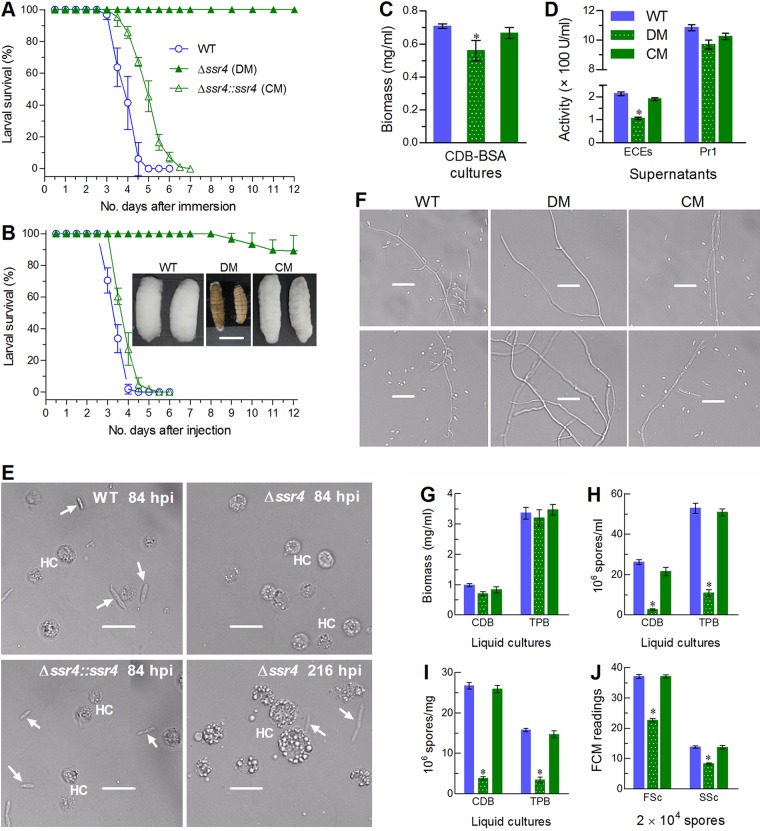FIG 3.
Ssr4 is indispensable for host infection and virulence of B. bassiana. (A and B) Survival trends of G. mellonella larvae after topical application (immersion) of a 107 conidia/ml suspension for normal cuticle infection and intrahemocoel injection of ∼500 conidia per larva for cuticle-bypassing infection, respectively. The insets in panel B show fungal outgrowths on the surfaces of cadavers 5 days after death from injection. Bar, 10 mm. (C and D) Hyphal biomass levels and total activities of extracellular enzymes (ECEs) and Pr1 proteases quantified from the 3-day-old CDB-BSA cultures initiated with 106 conidia/ml. (E) Microscopic images showing the presence or absence of hyphal bodies (indicated by white arrows) in the hemolymph samples taken from surviving larvae after injection. hpi, hours postinfection; HC, host hemocytes. Bars, 20 μm. (F to I) Microscopic images (scale: 20 μm), biomass levels, blastospore concentrations, and dimorphic transition rates quantified from 3-day-old CDB and TPB cultures, respectively. (J) Blastospore size and complexity (density) indicated by the FSc and SSc readings from flow cytometry (FCM) of 2 × 104 blastospores per sample. *, P < 0.05 (Tukey’s HSD) for marked differences between Δssr4 and its control strains. Error bars show SD from three replicates.

